Abstract
STUDY OBJECTIVE--The aim was to carry out an economic evaluation of the programme implemented in one district health authority for the screening of infants for hearing loss. DESIGN--The approach taken was a cost-effectiveness analysis using the methodology of decision analysis to model the options appraised: (1) the conventional screening policy was for a health visitor and colleague to screen at 8-9 months, and at 10 months for each child to be seen again by a clinical medical officer for a developmental assessment plus hearing screen if necessary; (2) the alternative policy was for screening to take place at 10 months only if concern is expressed (or if there is a clinical indication) at the developmental assessment; the introduction of a "clue list" was considered; (3) the third option was no screening. MAIN RESULTS--The annual expected cost per unit output was pounds 20.57 for the conventional screening policy, between pounds 11.13 and pounds 11.23 for the alternative policy, and pounds 11.27 for the third option of no screening. Introducing the "clue list" under the alternative screening policy is likely to raise the cost per unit output, but the effects are uncertain. CONCLUSIONS--The results suggest that the alternative screening policy is more cost-effective than the conventional policy, but has little advantage over not screening at all. The effects of introducing a clue list need further investigation.
Full text
PDF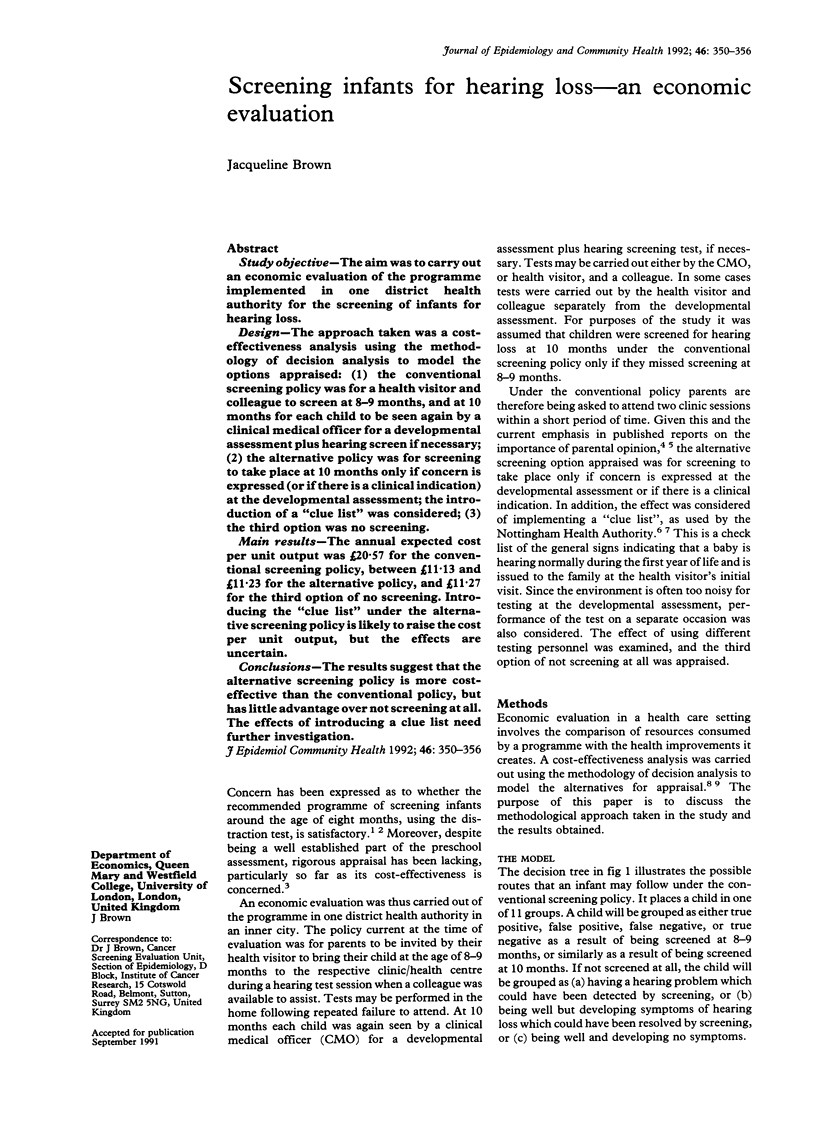
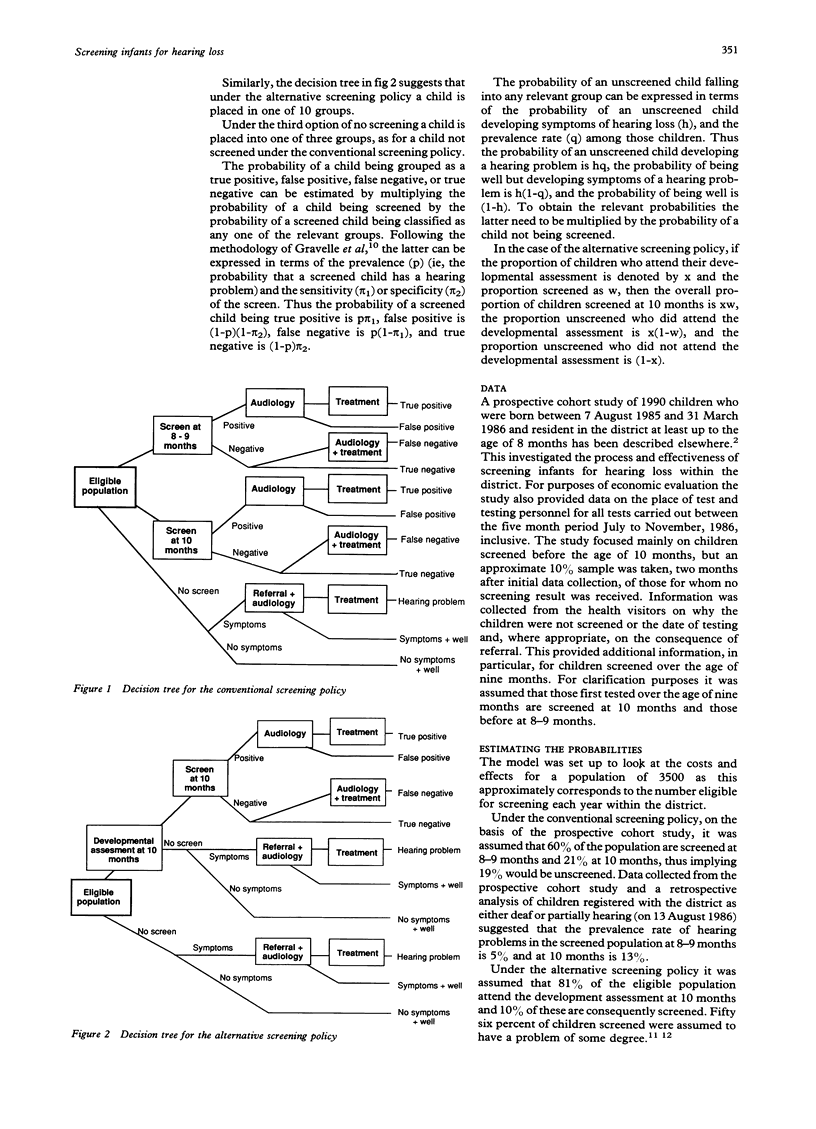
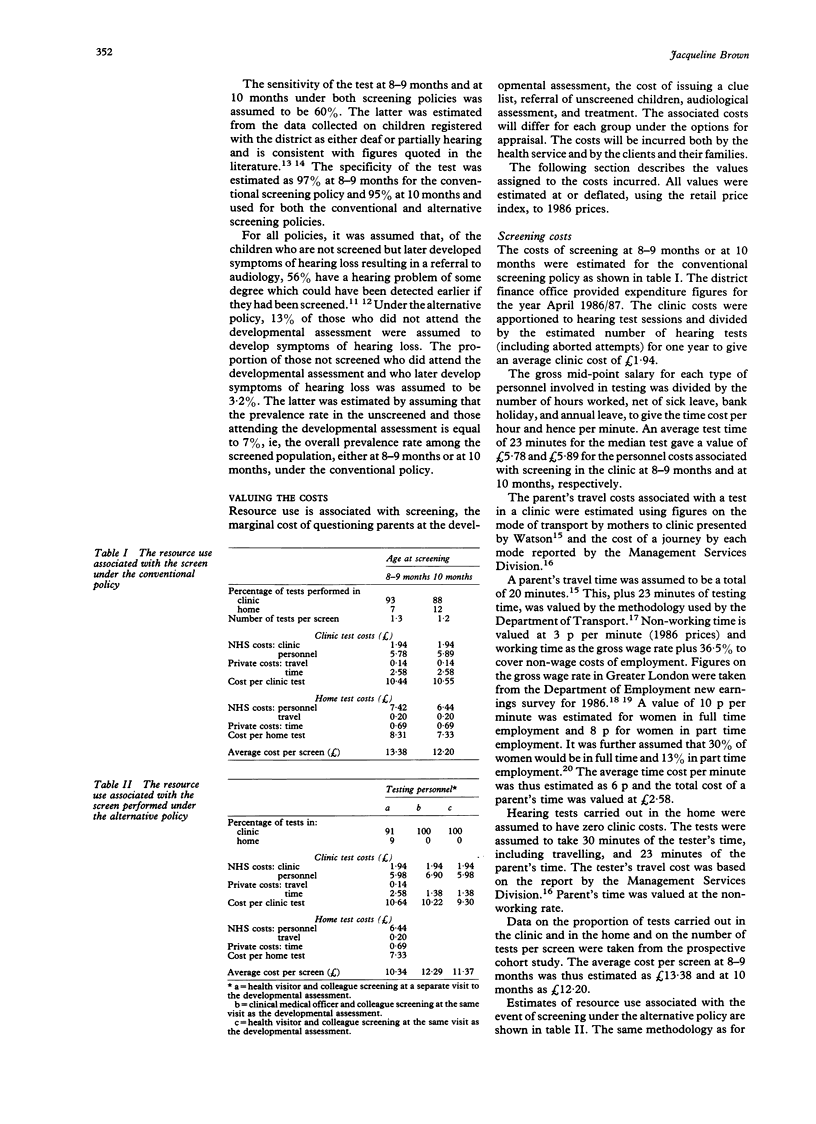
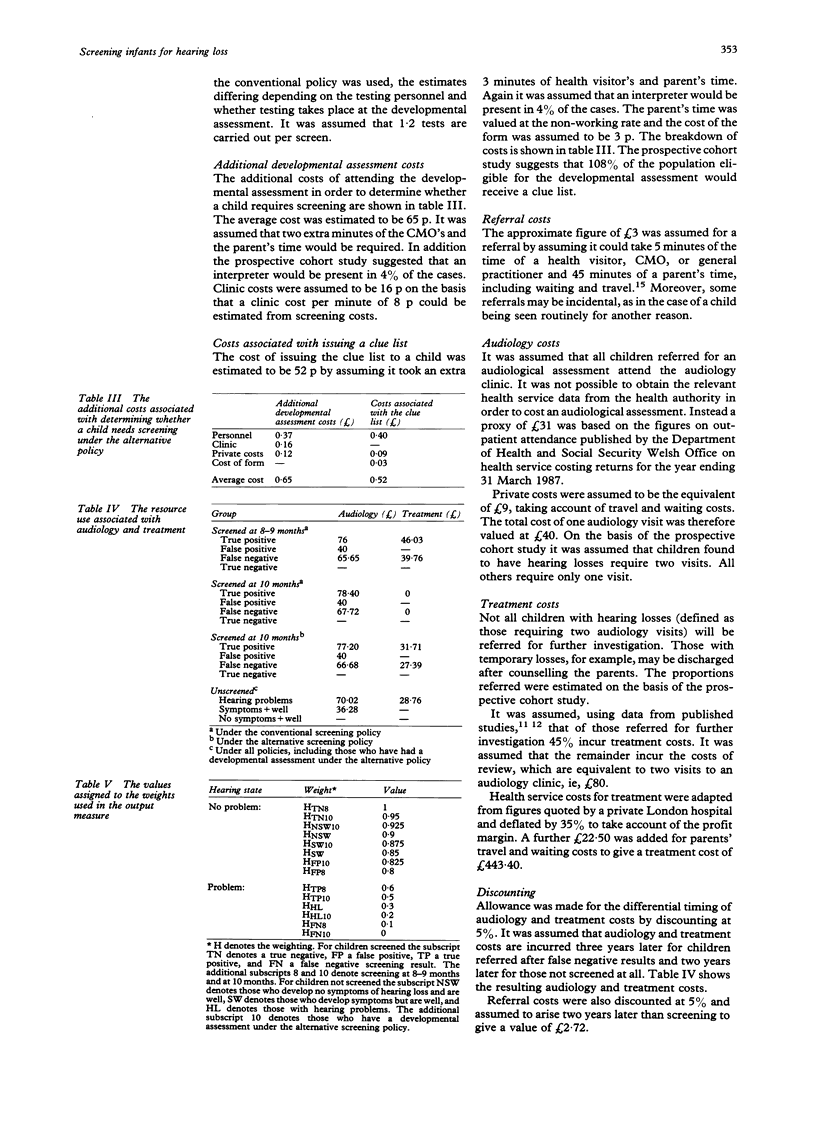
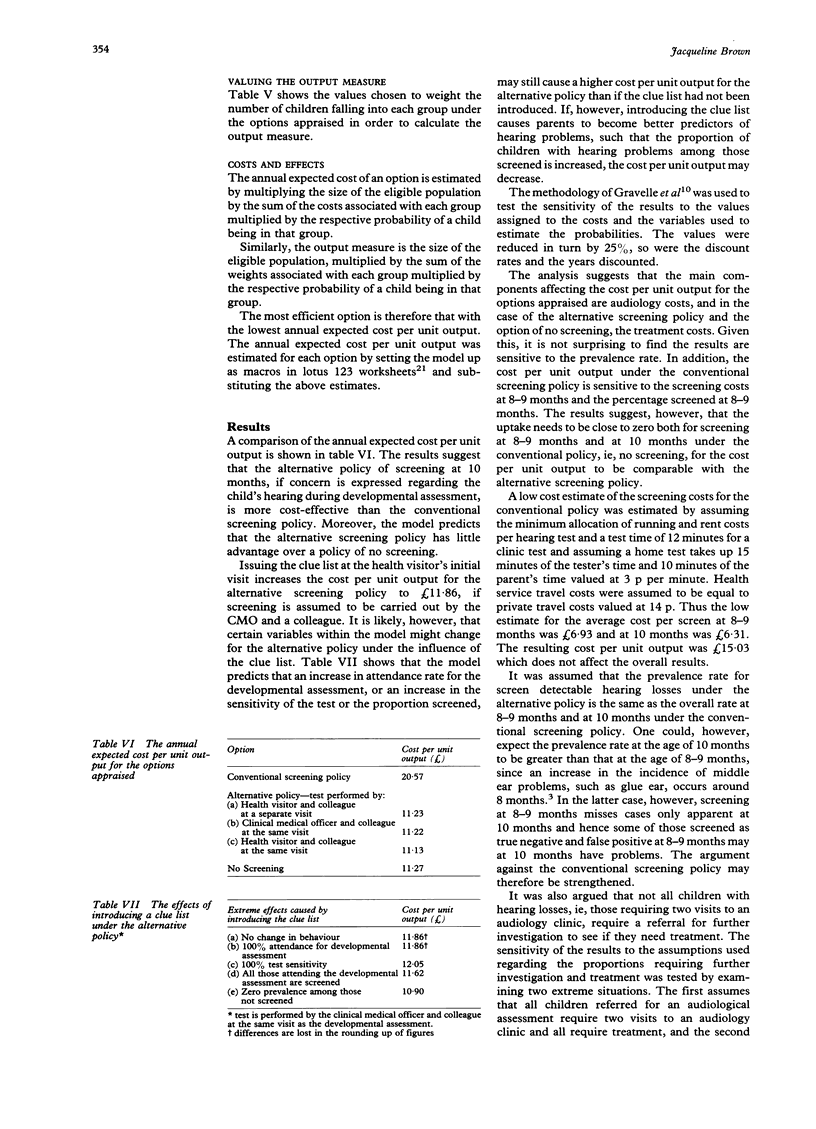
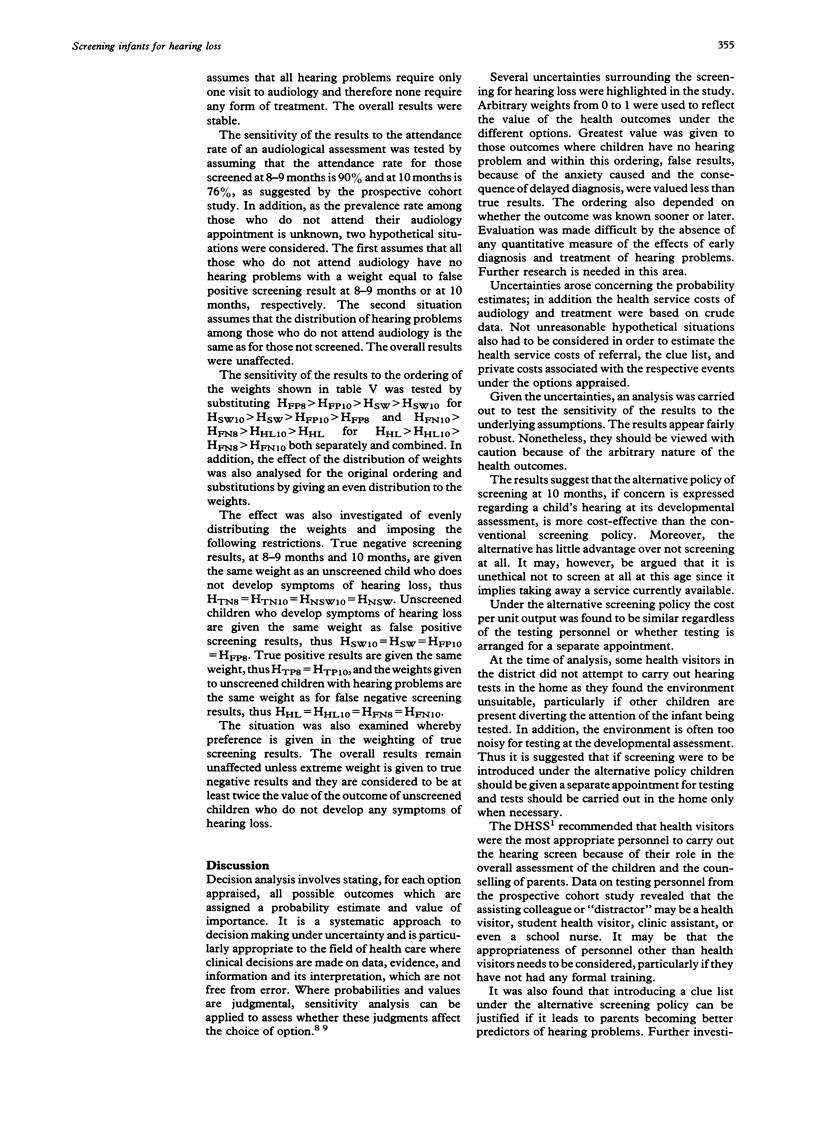
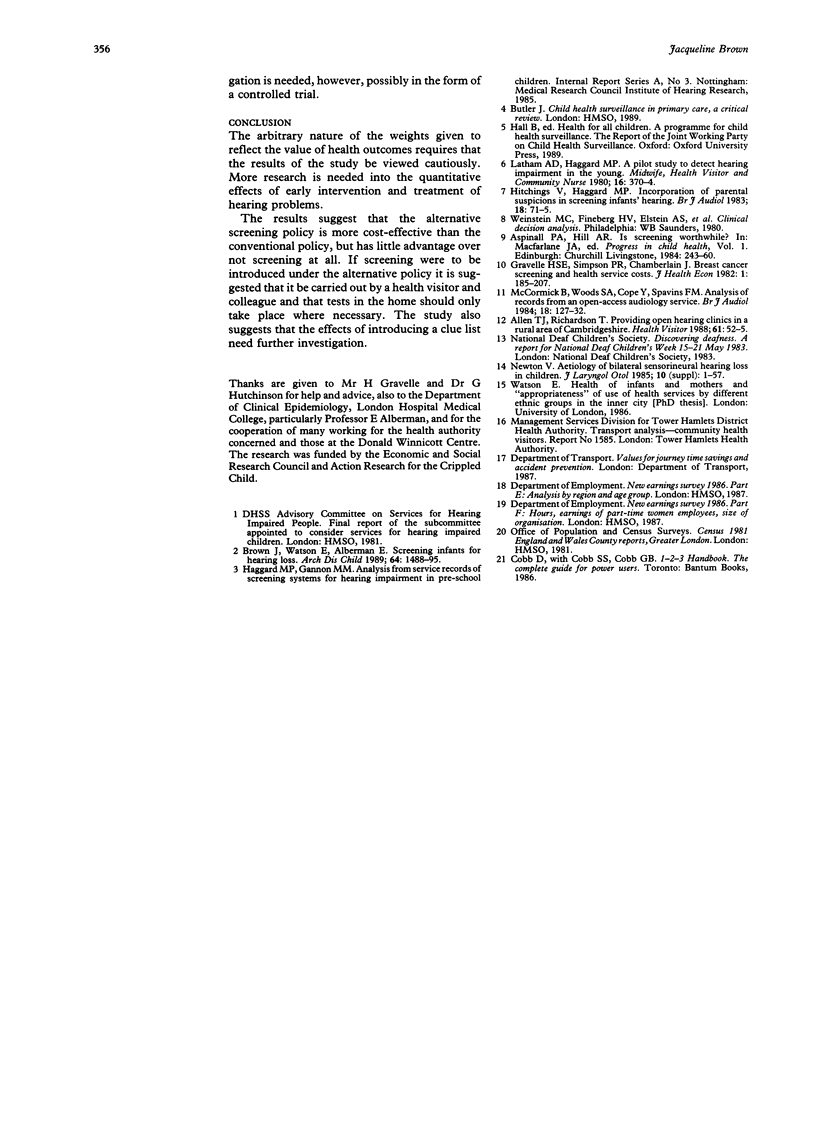
Selected References
These references are in PubMed. This may not be the complete list of references from this article.
- Allen T. J., Richardson T. Providing open hearing clinics in a rural area of Cambridgeshire. Health Visit. 1988 Feb;61(2):52–55. [PubMed] [Google Scholar]
- Brown J., Watson E., Alberman E. Screening infants for hearing loss. Arch Dis Child. 1989 Oct;64(10):1488–1495. doi: 10.1136/adc.64.10.1488. [DOI] [PMC free article] [PubMed] [Google Scholar]
- Gravelle H. S., Simpson P. R., Chamberlain J. Breast cancer screening and health service costs. J Health Econ. 1982 Aug;1(2):185–207. doi: 10.1016/0167-6296(82)90014-5. [DOI] [PubMed] [Google Scholar]
- Hitchings V., Haggard M. P. Incorporation of parental suspicions in screening infants' hearing. Br J Audiol. 1983 May;17(2):71–75. doi: 10.3109/03005368309078910. [DOI] [PubMed] [Google Scholar]
- Latham A. D. A pilot study to detect hearing impairment in the young. Midwife Health Visit Community Nurse. 1980 Sep;16(9):370–374. [PubMed] [Google Scholar]
- McCormick B., Wood S. A., Cope Y., Spavins F. M. Analysis of records from an open-access audiology service. Br J Audiol. 1984 Aug;18(3):127–132. doi: 10.3109/03005368409078940. [DOI] [PubMed] [Google Scholar]
- Newton V. E. Aetiology of bilateral sensori-neural hearing loss in young children. J Laryngol Otol Suppl. 1985;10:1–57. [PubMed] [Google Scholar]


